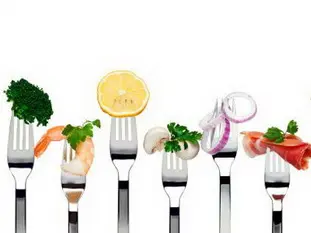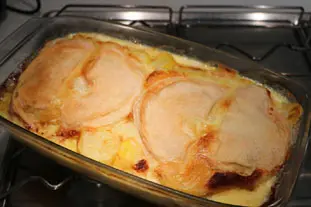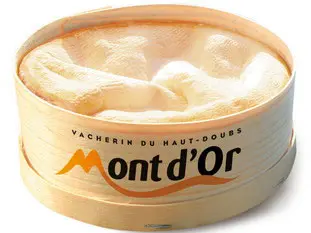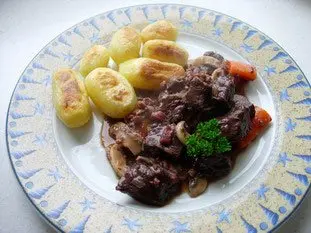Markers in cooking

When it comes to cooking, there is only one real rule, and that is that there are no rules!
By that I mean that everything is possible, everything can be combined, everything or almost everything can go with everything, but you have to like it, you have to find it good.
I have friends who regularly make brown sugar pasta, just the idea makes me jump up and down, but they love it, I respect that, tastes are not debatable!
That's why the dogmas, or the canons of cooking can be shaken up when you cook and at any time, in other words you make a recipe of this and you want to put that in it? But why not, nothing should stop you, if you like it.
By that I mean that everything is possible, everything can be combined, everything or almost everything can go with everything, but you have to like it, you have to find it good.
I have friends who regularly make brown sugar pasta, just the idea makes me jump up and down, but they love it, I respect that, tastes are not debatable!
That's why the dogmas, or the canons of cooking can be shaken up when you cook and at any time, in other words you make a recipe of this and you want to put that in it? But why not, nothing should stop you, if you like it.
11 K 5/5 (16 reviews)
Keywords for this post:CookingTasteMarkersEssentialLast modified on: July 3rd 2021
Markers in cooking
Of course, if you deviate from the basics of a typical recipe, it would be better not to call it by its original name, and especially not to publish it anywhere, as you might get a lot of flak if some guardians of the recipe in question spot you.
Basically, it's potatoes slices cooked in water, put in a gratin dish with a mix of onion, lardons and dry white wine, from Savoie if possible, cooked separately, the whole thing is topped with fresh cream and covered with half-reblochons before being put to gratinate.
A pure winter delight.
All this to tell you that we can, with a certain look, define what the cooks/pastry cooks call the markers of a recipe, that is to say the 2, 3 or 4 or more, indispensable tastes to deserve the name of the original recipe, even if it is completely revisited.
Let's go back to our tartiflette, its markers are: Potato, onion, lardon, Reblochon (or even cream?)
A sweet example, the Black forest cake: chocolate, cream, cherry, kirsch
Tarte tatin: apples, caramel, acidulous
Carbonnade: Beef, beer
Bœuf bourguignon: Beef, red wine, carrots
etc. etc.
You can see that it's sometimes quite simple to determine, sometimes a bit more tricky ( cassoulet?), but it allows you to target a recipe you want to revisit while keeping its tastes and therefore its spirit, and at the same time to allow yourself one or two liberties by changing 1 or 2 markers. I say 1 or 2, because beyond that you risk doing something completely different, which is not dramatic either, but it will probably not deserve the original name.
To sum up: The markers of a recipe, i.e. its essential basic tastes that characterize it, allow you to know if, when revisiting or adapting it, you are still in the spirit of it, or if you are doing something very different, which may not fit with the original name. But who cares if you like it...

Basically, it's potatoes slices cooked in water, put in a gratin dish with a mix of onion, lardons and dry white wine, from Savoie if possible, cooked separately, the whole thing is topped with fresh cream and covered with half-reblochons before being put to gratinate.
A pure winter delight.

All this to tell you that we can, with a certain look, define what the cooks/pastry cooks call the markers of a recipe, that is to say the 2, 3 or 4 or more, indispensable tastes to deserve the name of the original recipe, even if it is completely revisited.
Let's go back to our tartiflette, its markers are: Potato, onion, lardon, Reblochon (or even cream?)
A sweet example, the Black forest cake: chocolate, cream, cherry, kirsch
Tarte tatin: apples, caramel, acidulous
Carbonnade: Beef, beer
Bœuf bourguignon: Beef, red wine, carrots

etc. etc.
You can see that it's sometimes quite simple to determine, sometimes a bit more tricky ( cassoulet?), but it allows you to target a recipe you want to revisit while keeping its tastes and therefore its spirit, and at the same time to allow yourself one or two liberties by changing 1 or 2 markers. I say 1 or 2, because beyond that you risk doing something completely different, which is not dramatic either, but it will probably not deserve the original name.
To sum up: The markers of a recipe, i.e. its essential basic tastes that characterize it, allow you to know if, when revisiting or adapting it, you are still in the spirit of it, or if you are doing something very different, which may not fit with the original name. But who cares if you like it...
Lasts posts
The importance of sieving
In recipes that use a fine powder (flour, powdered sugar, etc.), you'll often see the advice to sift before using it. To sift is to pass the powder in question through a sieve (a very fine strainer) before incorporating it into your recipe. It's often advice, but is it really useful?September 3rd 20251,574
The grease spray
As soon as you have something in a recipe that sticks to the mold, the question always arises as to how difficult it is to remove from the mold. There's nothing more frustrating than breaking your cake when unmolding it, because part of it has stuck in the mold. The classic way to avoid this is...August 26th 20254,5195
Cake moulds
When we make a cake, or a cake of the same rectangular shape, we usually take out our usual mould and tell ourselves that the recipe is anyway "for a cake", but is it really that simple?August 25th 20254,8275
Thinning out herbs
If you need to add a long-stemmed herb (tarragon, mint, verbena, thyme, etc.) to a recipe, you'll probably only need the leaves and not the stem, so you'll need to remove the leaves. Leaf removal means keeping only the beautiful leaves, and eliminating the ugly stems and leaves, but how do you do...August 8th 20253,0435
Add a bay leaf
Bay leaf: small in size, but big in flavor. You'll find it in hundreds of recipes, and it's often added to cooking meat, in a sauce or broth, usually accompanied by other herbs or products. It's a staple of Provençal, Mediterranean and Oriental cuisine, but not the only one. Usually, in a...July 31th 20253,1475
Other pages you may also like
The importance of sieving
In recipes that use a fine powder (flour, powdered sugar, etc.), you'll often see the advice to sift before using it. To sift is to pass the powder in question through a sieve (a very fine strainer) before incorporating it into your recipe. It's often advice, but is it really useful?September 3rd 20251,574
The art of the charlotte
In cooking, a charlotte is a delicious moulded dessert, with biscuits around the outside that have been soaked in a flavoured syrup, filled with a light cream or mousse. The charlotte is left to set in the fridge before being turned out and served in slices. It is very light and a lovely sweet...February 27th 201344 K4.3
A few tips for effective kneading at home
When you have to knead dough for bread or some other recipe, you may well use a food processor or the type of machine known as a stand mixer. The best-known brands are Kenwood and KitchenAid. They are useful tools, but here are a few tips to help you get the best out of them.June 23th 2021280 K 23.7
A drizzle of olive oil
Often in a recipe, you have to "baste" vegetables, for example, before sending them to the oven. What the author means by this is that you need to put oil on top of the vegetables to cook them in the oven. Typically, we just quickly drizzle oil over the vegetables, hoping not to miss any, but...July 13th 20253,2974
The window-pane test in bread-making
The home bread-makers often ask themselves “Have I kneaded my dough long enough?” . A good question, as dough that is insufficiently kneaded will not rise properly or will fall flat when the top is slashed, which is very frustrating. To know when the dough is ready, one can rely on the length...June 16th 202194 K 23.9
Post a comment or question
Follow this page
If you are interested in this page, you can "follow" it, by entering your email address here. You will then receive a notification immediately each time the page is modified or a new comment is added. Please note that you will need to confirm this following.
Note: We'll never share your e-mail address with anyone else.
Alternatively: you can subscribe to the mailing list of cooling-ez.com , you will receive a e-mail for each new recipe published on the site.








